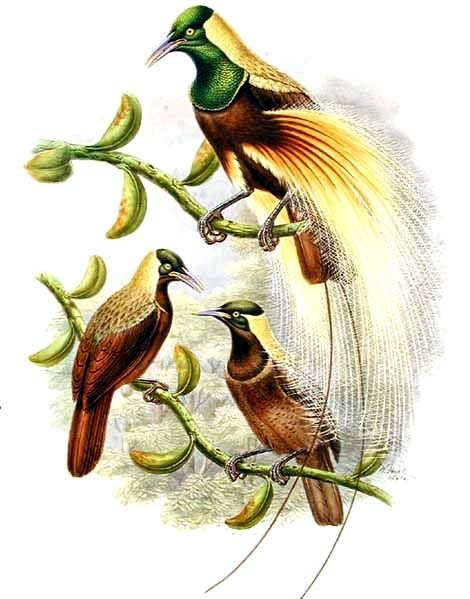A review of "Birds of New Guinea, Second Edition" (Princeton Field Guides)
This expensive door-stopper isn't simply a “field
guide”, but rather a handbook to all birds found in or around New Guinea. It
covers 779 bird species, many of which are endemic to the island. Highlights
include cassowaries, bowerbirds and birds of paradise. If you're a specialist,
painted berrypeckers, ifrits and melampittas just might rock your world.
Color plates, range maps and short species presentations are on facing pages, but the bulk of the information can be found in a separate text-only section further back in the book. The first part of the book contains an introduction to the ecology, geology, biogeography and avifauna of New Guinea, including a somewhat tedious discussion on new species and subspecies. It also contains practical tips for bird-watchers who want to visit the region. The main advice is *not* to visit if you are a newbie. Considering the fact that a cassowary might actually kill you if angered, that sounds like sound advice!
For some reason, the “New Guinea Region as defined by Mayr 1941” doesn't cover the Bismarck Archipelago, Manus and Bougainville, which are politically part of Papua New Guinea. Nor does it cover the Torres Strait Islands, which are culturally close to New Guinea, although politically part of Australia. It does cover the Aru Islands off New Guinea's west coast, which politically aren't part of any mainland territory. I'm not sure why “Mayr 1941” laid out the regional borders in this way, but hopefully it had something to do with the makeup of the actual avifauna…
As an interesting side point, Jared Diamond was involved in the making of this book. Yes, the all-knowing geography professor and popular science writer was an ornithologist in a previous life, writing papers with funny-sounding names such as “Geophagy in New Guinea birds”. I admit that I'm impressed!
One thing is for sure: if you are an experienced “birder” who absolutely want to see the world's most exotic feathered dinosaurs in their natural habitat, this is the volume you better get used to carry around in the jungle…
Color plates, range maps and short species presentations are on facing pages, but the bulk of the information can be found in a separate text-only section further back in the book. The first part of the book contains an introduction to the ecology, geology, biogeography and avifauna of New Guinea, including a somewhat tedious discussion on new species and subspecies. It also contains practical tips for bird-watchers who want to visit the region. The main advice is *not* to visit if you are a newbie. Considering the fact that a cassowary might actually kill you if angered, that sounds like sound advice!
For some reason, the “New Guinea Region as defined by Mayr 1941” doesn't cover the Bismarck Archipelago, Manus and Bougainville, which are politically part of Papua New Guinea. Nor does it cover the Torres Strait Islands, which are culturally close to New Guinea, although politically part of Australia. It does cover the Aru Islands off New Guinea's west coast, which politically aren't part of any mainland territory. I'm not sure why “Mayr 1941” laid out the regional borders in this way, but hopefully it had something to do with the makeup of the actual avifauna…
As an interesting side point, Jared Diamond was involved in the making of this book. Yes, the all-knowing geography professor and popular science writer was an ornithologist in a previous life, writing papers with funny-sounding names such as “Geophagy in New Guinea birds”. I admit that I'm impressed!
One thing is for sure: if you are an experienced “birder” who absolutely want to see the world's most exotic feathered dinosaurs in their natural habitat, this is the volume you better get used to carry around in the jungle…

No comments:
Post a Comment